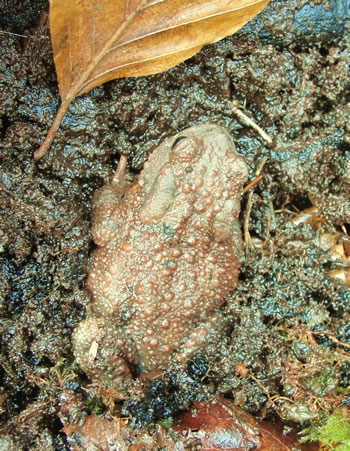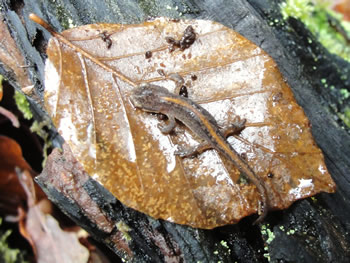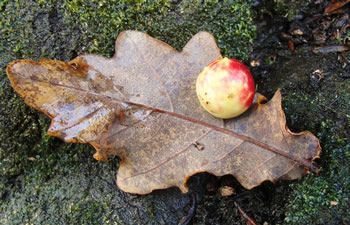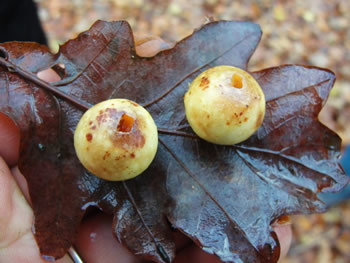Amphibians ,like reptiles usually hibernate just on the onset of winter time.Unlike reptiles, amphibians living in temperate climates do not need warmth in the same way and can tolerate cold temperatures.Both common frogs and common toads as well as Natterjacks can move around in cold air and water.Common frogs often hibernate at the bottom of muddy ponds or under logs, but need to keep damp.Toads do not need to keep damp, but being slightly moist much of the time is good for them . They hibernate late and can still be seen hunting at night well into December, or on any mild evening if the weather has been mild for a few days, suggesting that common toads do not truly hibernate in the same way that reptiles do.They hibernate on land under stones, logs or under buildings or animal burrows. This one was in the new forest under a rotting log half buried in the wet soil.
 Small newts such as this smooth newt need to come out of the water as soon as they metamorphose from a tadpole. They are very vulnerable at this small size to predation from ground beetles and centipedes, but generally they keep still and avoid interest.
Small newts such as this smooth newt need to come out of the water as soon as they metamorphose from a tadpole. They are very vulnerable at this small size to predation from ground beetles and centipedes, but generally they keep still and avoid interest.
 As the leaves from the trees fall, along with some of them are more galls such as this cherry gall on oak. The wasp(Cynips quercusfolii) adult hatches in winter, and are all females.They reproduce parthenogenetically, without fertilization.They have other forms of galls on different parts of the oak, just like most other gall wasps.
As the leaves from the trees fall, along with some of them are more galls such as this cherry gall on oak. The wasp(Cynips quercusfolii) adult hatches in winter, and are all females.They reproduce parthenogenetically, without fertilization.They have other forms of galls on different parts of the oak, just like most other gall wasps.
 This pair have been pecked into by great tits.
This pair have been pecked into by great tits.
 Birds such as tits learn where to find food either by trial and error, or by copying their parents or by watching other birds. In these cherry galls are just one wasp larvae per gall. Other types of gall can have several larvae within them.
Birds such as tits learn where to find food either by trial and error, or by copying their parents or by watching other birds. In these cherry galls are just one wasp larvae per gall. Other types of gall can have several larvae within them.
